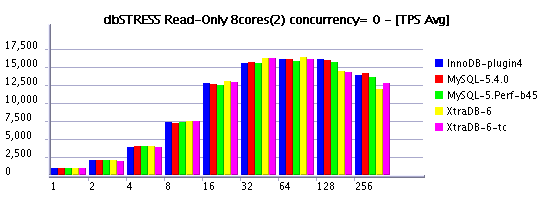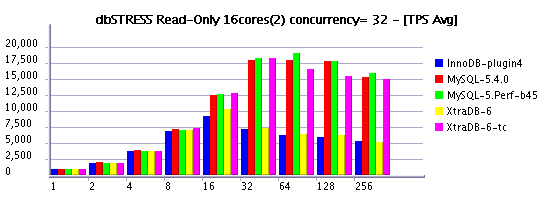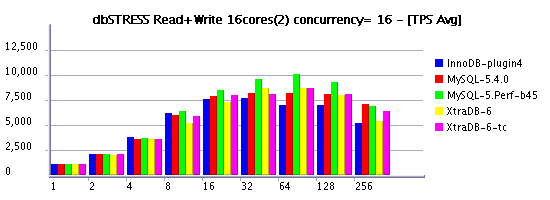Customer Name(s): SSC Team
NDA: no
Contact Information: dimitri (at) sun.com
Dates: Aug.2009
Keywords: MySQL 5.4, MySQL 5.Perf, XtraDB-6, XtraDB-3, InnoDB plugin-1.0.4, dbSTRESS, M5000
My intention again is first to replay exactly the same tests as before and on the same M5000 (quad core) server which I've tested and presented results in May. The newly shipped XtraDB-6 and InnoDB plugin-4 are making the difference, as well the latest Perf.version tool. So I'll skip again all previously made explanations about db_STRESS tests and scenario and go directly to the action :-))
NOTE: I'm using here the redo log size = 1024MB as it shows much better better performance level (and "furious flushing" is near to be fixed :-)) and the same dirty page percentage = 15% as before (it doesn't change anything for the moment within a current code implementation on all current InnoDB variations).
NOTE: I was surprised not all engines used by default the same number of redo log files within a log group, so for all engines the innodb_log_files_in_group = 3
NOTE: for all of the tests the second thread was enabled on each CPU core. To put attention on this point I add a mention about number of core threads on used labels. For example 8cores become 8cores(2) (or cores=8(2) for ex.) if both threads were activated on each core. Otherwise 8cores remaining only 8 cores were active with only one thread.














